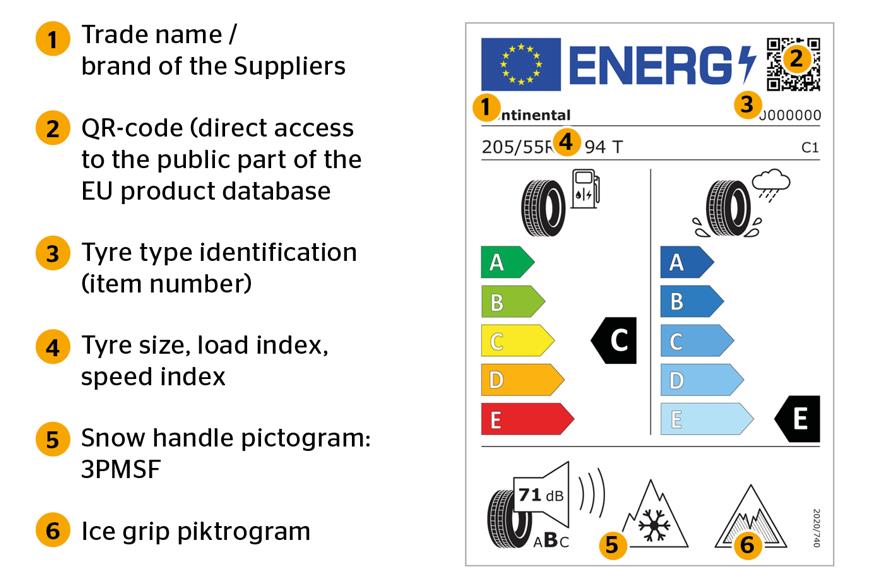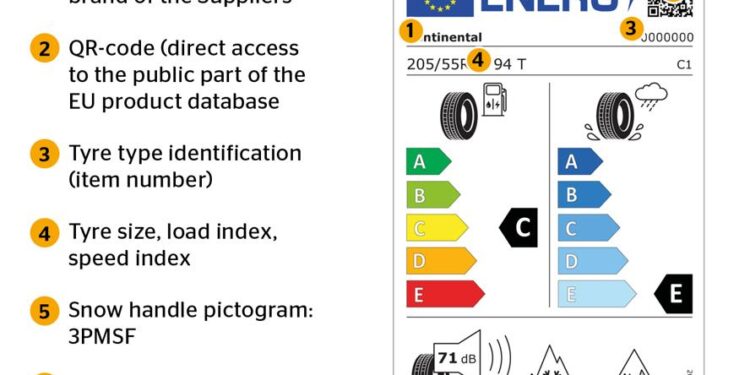Not every model of tire is common to both the U.S. and Europe, but where there is market symmetry, EU Tire Identification Labels provide a real opportunity for American tire shoppers to efficiently learn important information about a potential tire purchase.
EU Tire Identification Labels also allow for a straightforward comparison between tires, i.e. the information and ratings on the labels might sway you in one direction or another, and allow you to make a more informed tire choice according to your needs/performance priorities.
Autocolumnist.com’s mission is to enhance American drivers’ understanding of tires; both in the general sense, and when it comes to particular tires. We want U.S. drivers making informed tire purchase decisions, and to that end EU Tire Identification Labels are a meaningful assist.
In 2012 the EU enacted regulations that require tire manufacturers to publish fuel economy/rolling resistance, wet road grip, and noise emission ratings for every tire. Each tire is tested and then assigned a label with information according to how it scored in these three areas.

Unlike some other ratings systems, e.g. treadwear grade, the ratings are objectively and independently (not internally) established according to fixed testing protocols.
As Falken explains, “The assessment rates the tyres in the classes A (best result) to G.”
In terms of how the rating scale applies to fuel economy, “An improvement by one class represents a saving of 0.1 litres of fuel per 100 kilometres.” (0.026 gallons per 62 miles / 6.4 gallons per 15,000 miles in American speak.)
Wet road grip differential between classes is established as follows: “At an initial speed of 80 kilometres per hour, the braking distance on wet roads differs by 3-6 meters between two classes.” (9.8-19.7 feet.)
And lastly, “The noise emission measurement is not carried out by class but by beams, which are symbolic for the decibel levels. The more black bars appear on the label, the louder the tyres.”
To access the EU Tire Identification Label for a tire, visit the manufacturer’s European site, or alternatively an online EU tire retailer like BlackCircles.com.
A few real world examples:
Hankook’s U.S. and Euro sites offer very different specifications charts for their ultra-high performance Ventus V12 evo2.
- The EU specifications chart provides the fuel economy, wet grip, and noise ratings whereas the American chart does not.
- Combining information between the two charts gives a far more comprehensive picture of the Hankook tire and its performance.
Similarly, reviewing the full information available across the Euro and U.S. sites for the Continental SportContact 6 is advantageous.
- EU Tire Identification Labels are also an asset when comparing, and looking to make a decision between two competing tires.
Also in the ultra-high performance summer category, drivers might look to compare the Goodyear Eagle F1 Asymmetric 3 and Michelin’s new Pilot Sport 4 S. In size 275/35-19 they stack up as follows:
- If the driver prioritizes wet traction, the 4S’s advantage in this performance area might inform his or her purchase decision.
- A comparison of the same two tires in size 255/30-19 tells a different story.
Here the Goodyear bests the Michelin on both fuel efficiency and road noise, which could be deciding factors:
For additional help on interpretation of EU Tire Identification Labels see these informative guides from Goodyear and Dunlop.



